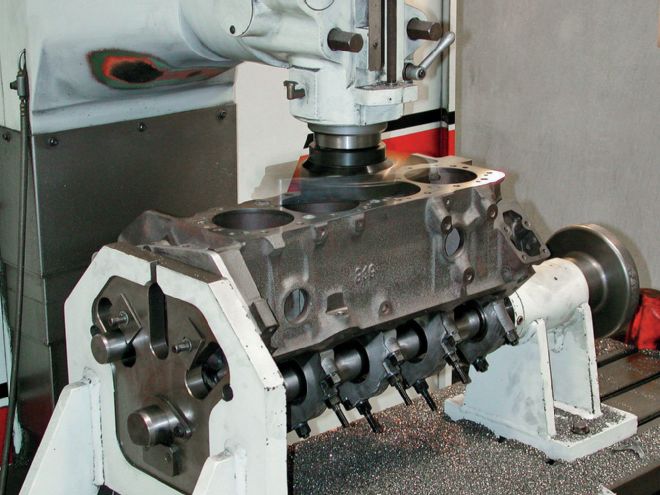
Stroker engine combinations are nothing new, but their popularity seems to grow with performance enthusiast every year. Packing more cubic capacity is the name of the game, and longer crankshaft stroke is the way it is done. Years ago, the availability and cost of custom crankshafts made the stroker engine combination a rarity. The common stroker combinations often simply took advantage of existing crankshafts from engines in the same family. Examples here are the popular Chevy 383, a product of a factory 400 Chevy small-block crank's 3.75-inch stroke and a 350 block. The 400 crank adds a good chunk of displacement to a 350 block but does not even match the displacement of a factory 400 Chevy small-block. Mopar fans looked to the factory 3.750-inch 440 crank to up the inches of a short stroke 400 engine to a healthy 451, but this required machining the mains to fit. More displacement, or even longer than factory stroke combinations, called for welded journals or getting a hold of a custom aftermarket crankshaft.
The situation has changed over the last decade, with aftermarket stroker cranks becoming readily available for most popular engine types. Even better, custom long-stroke crankshafts are affordably priced, making them a bargain for the potential performance gain.
A stroker crank requires just a little more planning than ordering up the 'shaft and bolting it in. The crank, rod, and piston combination has to fit in the block's available space. The relevant dimension here is the block deck height, defined by the measurement from the center of the main bearing bore to the top of the decks. For a standard Chevy small-block, a typical measurement here is 9.025 inches. The deck height is the space you have to work with, and you fill that space with the stroke, the rod length, and the piston compression height. Typically, an engine builder will have a specific stroke in mind—let's use 3.850 inches in a standard Chevy small-block. The next consideration is the rod length. Let's look at the standard 5.700-inch and the popular aftermarket 6.000-inch rod lengths for example. The variable here will be the compression height that will make it all come together, with the formula being:
Deck Height = ½ Stroke + Rod Length + Piston Compression Height
In our examples, solving for the compression height, we get a 1.40-inch compression height for the 5.700-inch rods and a 1.100-inch compression height for the 6.00-inch rod engine. Note that the added 0.300 inch of rod length subtracts exactly that amount from the piston compression height. In this example, the very short compression height needed with the 6.00-inch rod will require the use of an oil ring support rail, since the piston pin will overlap the oil ring. Juggling the numbers in the formula will reveal which parts specifications are required to work together with a given deck height.